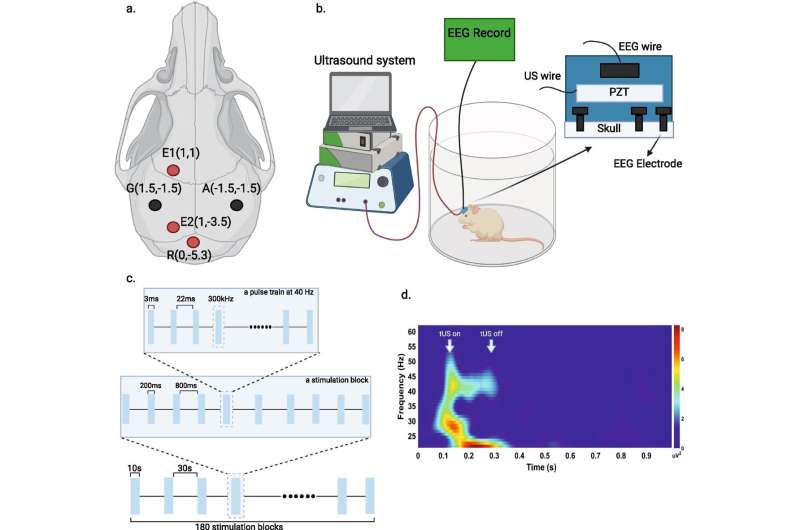Home » Health News »
Transcranial ultrasound used in mice with Alzheimer’s disease features

In December 2021 scientists from South Korea used a technology called transcranial ultrasound stimulation to excite specific areas of mice brain. They found mice with features of Alzheimer’s had reduced levels of the hallmark Alzheimer’s protein, amyloid after receiving treatment.
Researchers used a low frequency at 40Hz to stimulate the brains of mice bred to have features of Alzheimer’s disease. Alzheimer’s is the most common cause of dementia worldwide.
The mice had electrodes implanted into the skull to receive the treatment designed to stimulate brain waves.
Dr. James Connell, head of translational science from Alzheimer’s Research UK, said, “Unless we act, one in three people born today will go on to develop dementia. There are currently no treatments that can affect the course of the diseases that cause this devastating condition in the UK. The development of new treatments and technologies is an important focus for research to overcome diseases like Alzheimer’s and it’s important to explore as many avenues as possible.
“In this study researchers tested whether low frequency ultrasound treatment to activate electrical brain impulses in mice bred to have features of Alzheimer’s improved brain health. Although researchers noticed some changes in the level of the hallmark Alzheimer’s protein, amyloid, as well as changes in brain activity in the mice receiving stimulation, the study does not provide enough evidence to suggest any benefit from this treatment.
Source: Read Full Article


